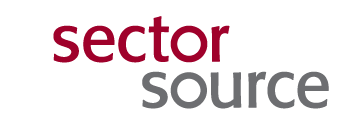How Insurance Works
Insurers determine how much to charge per policy based on the probability that there will be a claim on that policy. Your organization may never have had a claim or a problem, but your premiums will be based on the national statistics your insurer has on file for similar organizations.
Do we really need insurance?
Nonprofit organizations are not required to have insurance to operate in Ontario, except for vehicle insurance for volunteer drivers. Take the example of the risk of serious injury from an accident for daily drivers. How likely is it that:
- an incident would occur?
- the incident could result in a financial catastrophe for your organization?
- you would require legal help to defend a claim?
For most nonprofits, it makes more sense to make regular payments (premiums) to an insurer than to risk a financial loss that would severely impact their ability to operate.
Insurance Policies for Nonprofits
Insurance is generally intended to help policyholders cope with the financial consequences of unpredictable events that are "sudden and accidental." No insurance contracts pay for every potential risk or problem an organization faces. Insurance policies you may need generally fit into two categories:
- Loss coverage. These policies provide coverage to items or places that your nonprofit owns (e.g. buildings, vehicles, desks, computers, important papers) in the event they are lost, stolen, or damaged.
- Lawsuit coverage. Called liability policies, these policies cover your organization and people from a lawsuit.
Personal lines insurance (e.g., car insurance, home insurance) covers assets an insured person owns or leases or for lawsuits against the insured personally. Commercial lines insurance is for organizations and businesses and covers the assets that an organization or business owns or leases or for lawsuits against it.
Common Policies for Charities & Nonprofits
Liability Insurance Nonprofits Should Consider briefly outlines eight policies relevant to nonprofits.
Insurance Coverages Nonprofits and Charities Need to Understand is an excellent detailed summary of insurance coverages charities and nonprofit may need and should be familiar with.
Common Policies
Commerical General Liability (CGL)
Covers: Bodily Injury and Property Damage, Personal Injury, Medical Payments (NO lawsuit), Tenants’ Legal Liability, Endorsements like Non-Owned Automobile Liability
Directors' & Officers' Liability
Directors and officers of nonprofit organizations are at risk as they can be held:
- personally liable for their decisions.
- liable for acts committed by other directors simply because they sit on the same board.
How to Read a Policy
Your renewal policy just arrived in the mail. Beyond just answering any questions you have been asked, take the time to read the policy and ensure you can answer these questions:
- what is covered and what is not covered (the key is to review the exclusions);
- who is covered (look at what groups of people are defined as named insureds - e.g., volunteers); and
- who is not covered (e.g., volunteers, special committees).
If anything is not clear, ask for help. If you cannot find it in the policy, ask for a positive answer ("yes they're covered") in writing (email is fine). Keep that email with your other insurance documents.
Don't be nervous contacting your insurance broker or agent with questions. Reading your policy wording will be tedious and tricky, but you will be glad you did if a claim hits or your coverage is questioned by a stakeholder. For more information, see How to Read an Insurance Policy (Nonprofit Risk Management Centre, 2004)
Buying Insurance : What to do, What not to do
What to do
- Do find an insurance agent or broker who has a strong knowledge of nonprofits. Ask what percentage of the firm's business is represented by premiums paid by nonprofits and the number of nonprofit organizations they serve. Also ask about the types of nonprofits that they insure (it might be mostly condominium corporations or professional associations). Ask for references from other nonprofit clients.
- Do take the time to understand what you're buying.
- Do ask about a better deal. Unless you inquire, the cost of insurance is not likely to go down.
- Do keep up to date with market conditions. A "soft" insurance market means that it is generally an excellent time to find strong coverage at a reasonable price. A couple of months before your renewal date, contact your broker and ask what they expect regarding renewal premiums (or coverage possibilities). Also ask if they plan to approach other insurers at renewal and how many.
- Do obtain independent advice. If your nonprofit relies on an insurance agent or broker who also serves on your board, eliminate this serious conflict of interest as soon as possible. Either the agent/broker should step down from the board, or you should find a new agent or broker.
What not to do
- Don't assume that your premiums will go down over time because your nonprofit hasn’t made a claim, as premiums are only partly affected by your history. However, it doesn’t hurt to ask.
- Don't assume that your insurer is committed for the long term. Insurers may decide not to renew policies, sometimes because they decide to stop insuring a certain segment of the nonprofit sector. Insurance is a business, after all. Small and medium businesses are often in the same predicament as small and medium nonprofits in this regard.
- Don't be overly trusting. You have an obligation to protect your nonprofit's assets, so take time to understand your insurance coverage rather than just waiting to hear "don't worry, you're covered." Ask for it in writing if your broker or agent cannot show you the answer clearly in the policy wording.
Other Resources
- Insurance Toolkit for the Voluntary Sector - Volunteer Alberta
- Insurance FAQ - Nonprofit Risk Management Centre (U.S.)

